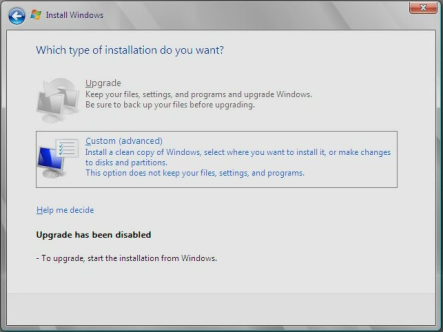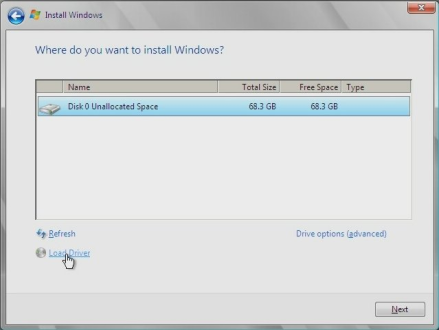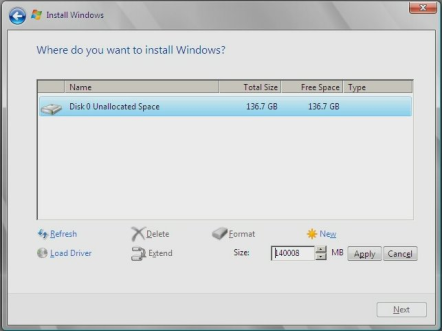| Skip Navigation Links | |
| Exit Print View | |

|
Sun Fire X2270 M2 Server Product Documentation |
About This Documentation (PDF and HTML)
Download Server System Tools and Drivers
Hardware Installation and Product Notes
Sun Fire X2270 M2 Server Installation Guide
Installation Overview and Preparation
Installing the Server Into a Rack With Optional Slide Rails
Communicating With the ILOM and the System Console
Configuring the Factory--Installed Oracle Solaris 10 Operating System
Powering On and Powering Off the Server
Sun Fire X2270 M2 Server Product Notes
Oracle Solaris Operating System
Planning the Oracle Solaris Operating System Installation
Installing Oracle Solaris 10 OS
Introduction to Linux Installation
Preliminary Tasks Before Installing an OS
Installing Oracle Enterprise Linux
Installing SUSE Linux Enterprise Server
Installing Red Hat Enterprise Linux
Booting From OS Distribution Media
Configuring a Linux Server to Support PXE Installation
Identifying Logical and Physical Network Interface Names for Linux OS Configuration
Planning the Operating System Installation
Verifying BIOS Settings for New Installations
How to View or Edit BIOS Settings for New Installations
Installing Windows Server 2008 Operating System
Task Map for the Windows Server 2008 Installation
Booting Windows Server 2008 Using Local or Remote Media
How to Install Windows Server 2008 Using PXE Network
Prerequisites for Installing PXE Network
How to Install Windows Server 2008 Using PXE Network
Installing Platform-Specific Device Drivers
How to Install Platform-Specific Drivers Using the Tools and Drivers DVD
How to Install Supplemental Software Using the Tools and Drivers DVD
How to Manually Launch the Tools and Drivers Application Using a DVD
Incorporating Sun Fire Drivers Into a WIM Image
How To Add Drivers to the WIM Image
How to Install the WIM Image on a Client System
Configuring RAID Controller in the BIOS Setup Utility
How to Configure RAID Controller in BIOS
Sun Fire X2270 M2 Server Installation Guide for ESX Software
Preparing to Install VMware ESX 4.0 and ESXi 4.0
Administration, Diagnostics, and Service
Overview of the ILOM Supplement
Communicating With the ILOM and the System Console
ILOM Platform Features for the Sun Fire X2270 M2 Server
Using ILOM to Monitor the Host
Introduction to Diagnostic Tools
U-Boot Diagnostic Startup Tests
Accessing the Pc-Check Diagnostics Utility on the Tools and Drivers CD/DVD
Sun Fire X2270 M2 Server Service Manual Organization
Sun Fire X2270 M2 Server Overview
Maintaining the Sun Fire X2270 M2 Server
Sun Fire X2270 M2 Server Service Procedures and Information
For example:
For distribution CD/DVD. Insert the Windows 2008 Distribution media (CD labeled #1 or the single DVD) into the local or remote USB CD/DVD drive.
For ISO image. Ensure that the ISO images are available and that the ILOM Remote Console application is aware of the first ISO image location.
For additional information about how to set up the installation media, see Installation Boot Media
For example:
From the ILOM web interface, select Remote Control —> Remote Power Control, then select the Power Cycle option from the Host action drop-down list box.
From the local server, press the Power button on the front panel of the server to turn the server off, then press the Power button again to turn the server on.
From the ILOM CLI on the server SP, type:
reset /SYS.
The BIOS screen appears.

The Boot Device screen appears.
Note - The screen that appears in your installation might be different depending on the type of disk controller installed in your server.

For example:
If you chose the Windows Local delivery method, select CD/DVDW.
If you chose the ILOM Remote Console delivery method, select Virtual CDROM.
The Windows installation wizard starts.
Continue the Windows installation wizard until the Installation Type dialog appears.

The Where Do You Want To Install Windows dialog appears.

 | Caution - Data loss. Formatting or partitioning erases existing data. |
The Where To Install Windows dialog appears.

A confirmation window appears.
The partition is created.
The Windows installation begins.
The server reboots multiple times during the installation process. This process could take several minutes.
When the Windows installation is finished, the OS starts and prompts you to change the user password.

Note - Windows Server 2008 enforces stronger password schemes for user accounts. Password standards include restrictions on length, complexity, and history. For more details, click the Accessibility link at the account creation page.
After the initial user account is created, the Windows Server 2008 desktop appears.